Three places of support
- The seat strap
- The right thigh
- Base of the left index finger
The Seat Strap
- The seat strap holds most of the weight of the bassoon.
- The strap rests directly on the chair with the plain end on the left and the hook, ring, or cup on the right. The seat strap is doing its job when there is no slack in the strap between the chair and the point of connection on the boot joint. Slack in the seat strap means the player is holding the bassoon up instead of letting the weight rest on the seat strap.
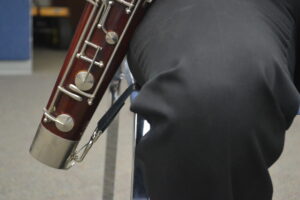
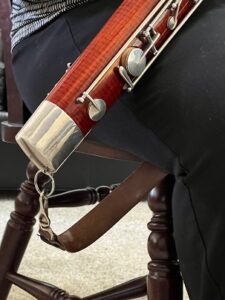
The Right Thigh
- The right thigh supports the remaining weight of the bassoon.
- The side of the boot joint without any keys should rest securely on/against the right thigh.
- Follow these steps to determine where the boot should contact your thigh:
- Allow your right arm to hang down by your side.
- Bend your elbow until your forearm is parallel to your thigh.
- Ideally, the boot joint should fit in the palm of your right hand without having to reach forward or pull your arm back toward the back of the chair.
- This position will allow the right shoulder, arm, hand, and fingers to remain relaxed.
NOTE: It is crucial for the boot to rest on the right thigh. Petite-sized players will need to sit more toward the right edge of the chair or angle the chair to create this point of contact.
If the boot joint rests again the edge of the chair instead of the player’s right thigh, it will not be stable in the player’s hands.
This ideal position for the boot on the thigh may need a little adapting due to:
- The angle of the bocal – the bocal needs to be in a level plane for good intonation. A downward angle will make the pitch flat; an upward slant will make the pitch sharp. The boot should rest on the thigh where it allows the reed to enter straight into the mouth.
- The body proportions of the player – if the player has a very long torso, legs, and/or arms an adjustment may be needed.
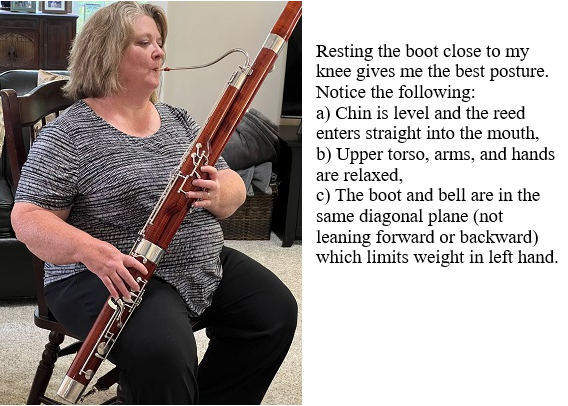
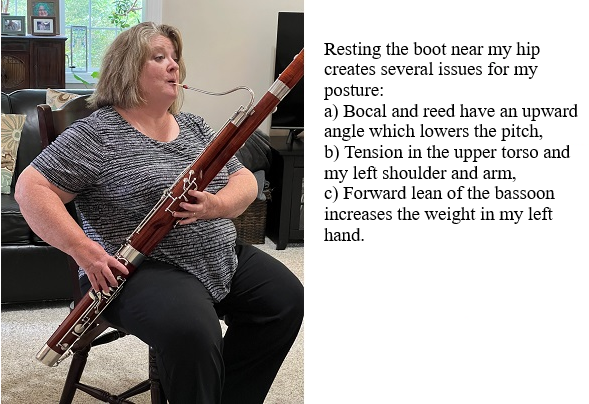
The Base of Left Index Finger
- The base of the left index finger provides the third point of contact to balance and support the bassoon.
- This point of contact between the long joint and the left index finger should anchor the left hand to facilitate finger technique.
- Fourth line F is a good note for checking this point of support because all four fingers of the left hand are up while the left thumb presses the whisper key.
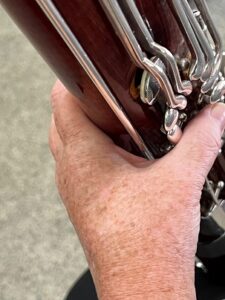
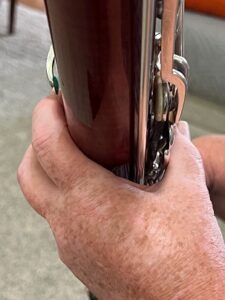
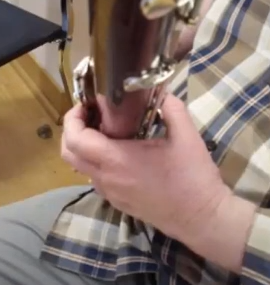
The degree of the diagonal tilt across the body will either increase or decrease the weight supported by the base of the left index finger.
Good:
- Keeping the bassoon in a single vertical plane will minimize the weight on the left hand.
- Minimizing the diagonal tilt to the left will minimize the weight in the left hand.
Not good:
- Weight on the left hand will increase as the tilt to the left increases.
- Weight on the left hand will increase if the bassoon is allowed to tilt forward, away from the player.
- Holding the bassoon to the right side of the body so that it is straight up and down (no diagonal tilt) will eliminate the second and third points of support and will force the player to twist the body and head to the right.
Recognizing Bad Posture
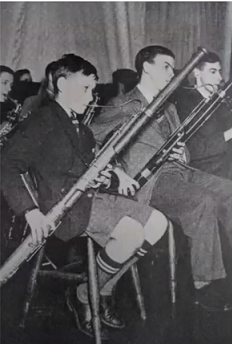
Problem: Both bassoonists have the boot resting back by their hip which is making it lean forward, increasing the weight on the left hand. Solution: Move the seat strap closer to the front of the chair and rest the boot closer to their knee.
Problem: The bassoonist in the foreground is lowering his chin to reach the reed. Solution: Raise the bassoon by pulling the seat strap to the left.
Problem: The other bassoonist is tilting his head and body to the left. Solution: Adjust the angle of the reed on the bocal.
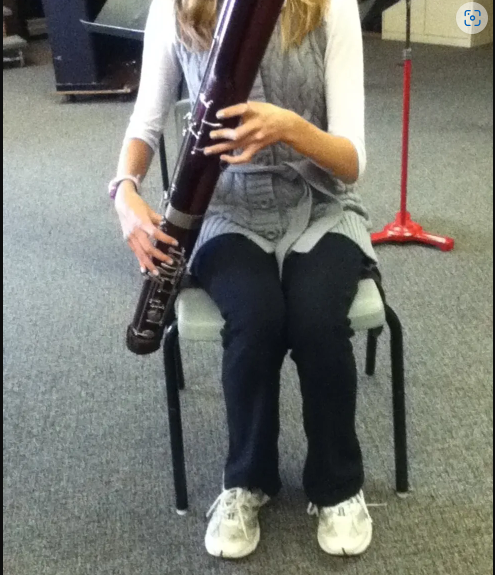
Problem: The bassoon is resting against the chair instead of on the right thigh. Solution: Sit along the right side of the chair.

Feedback/Errata